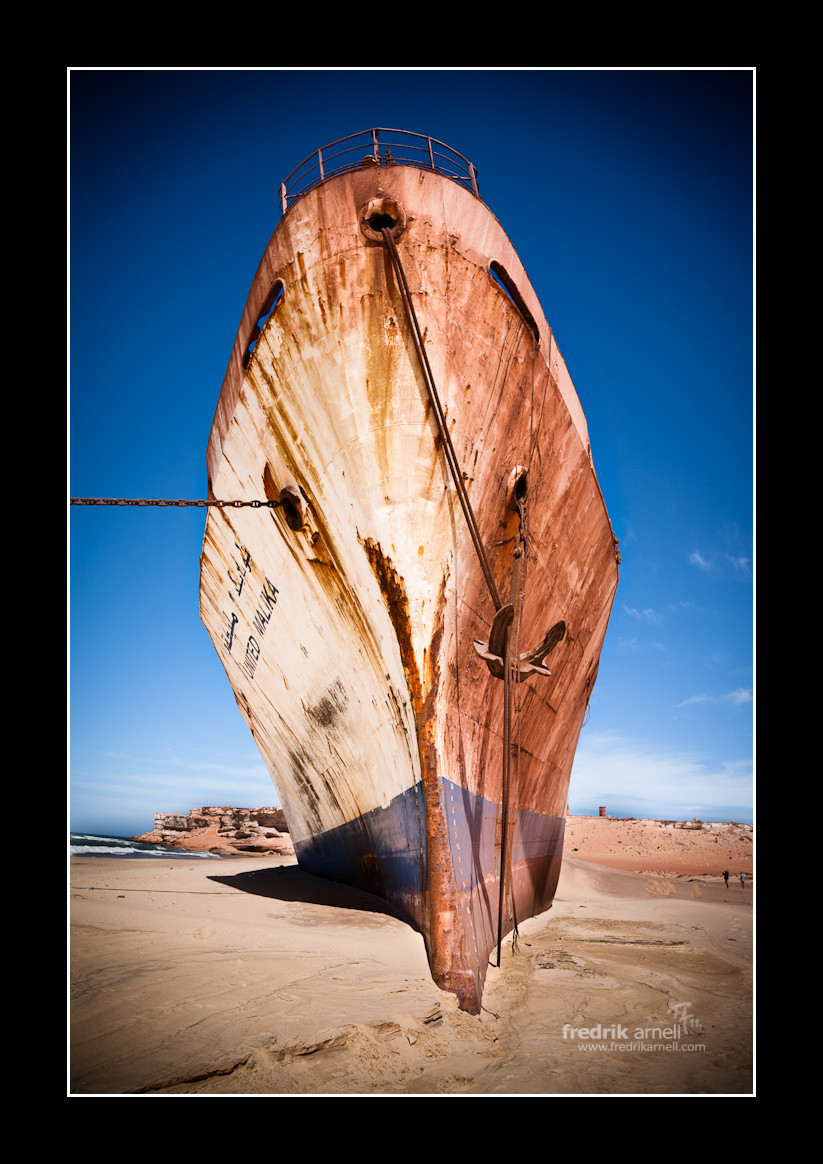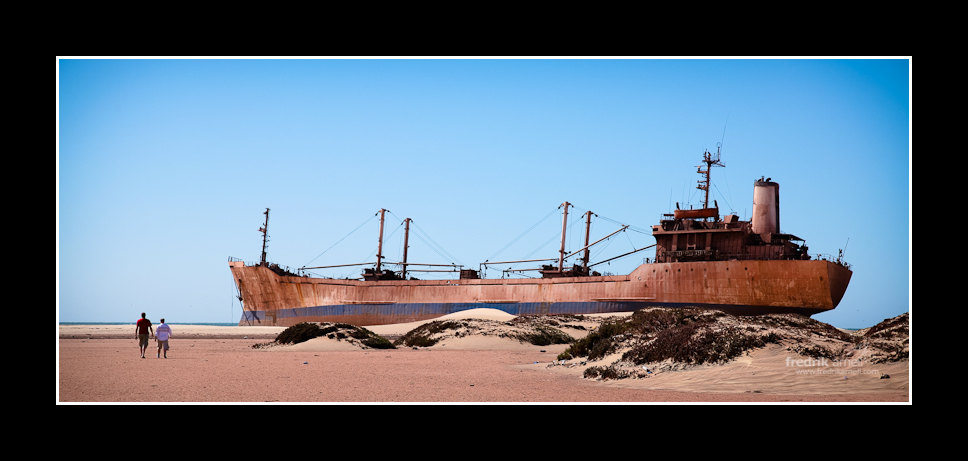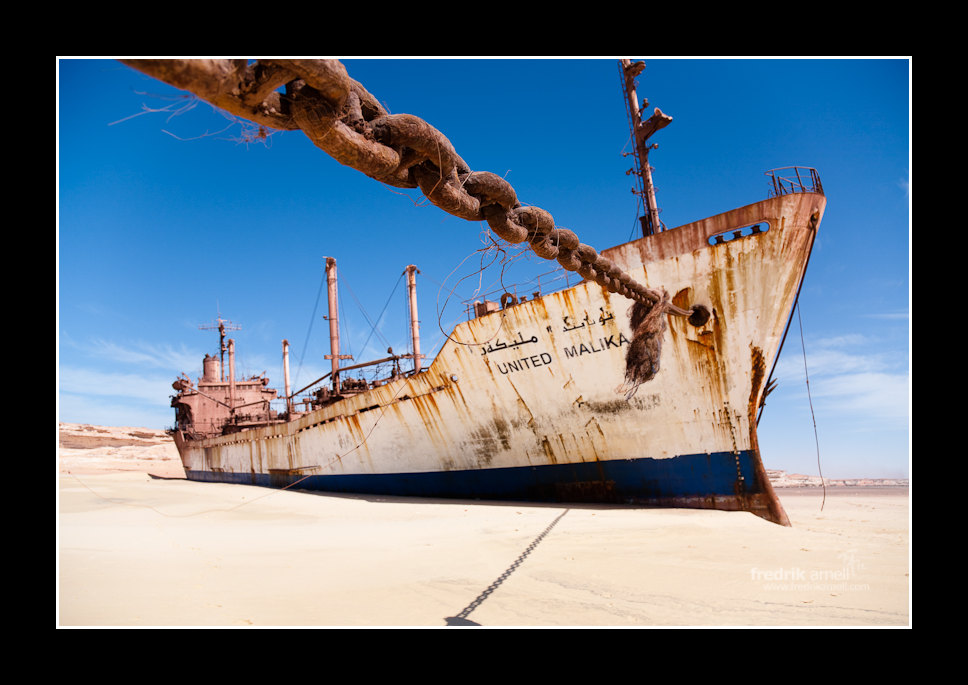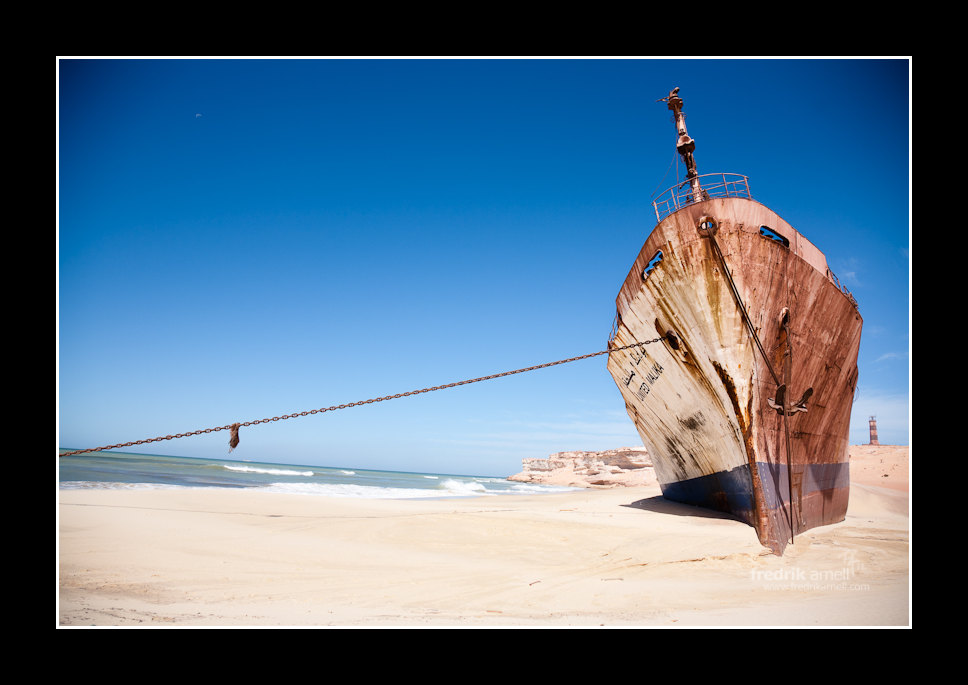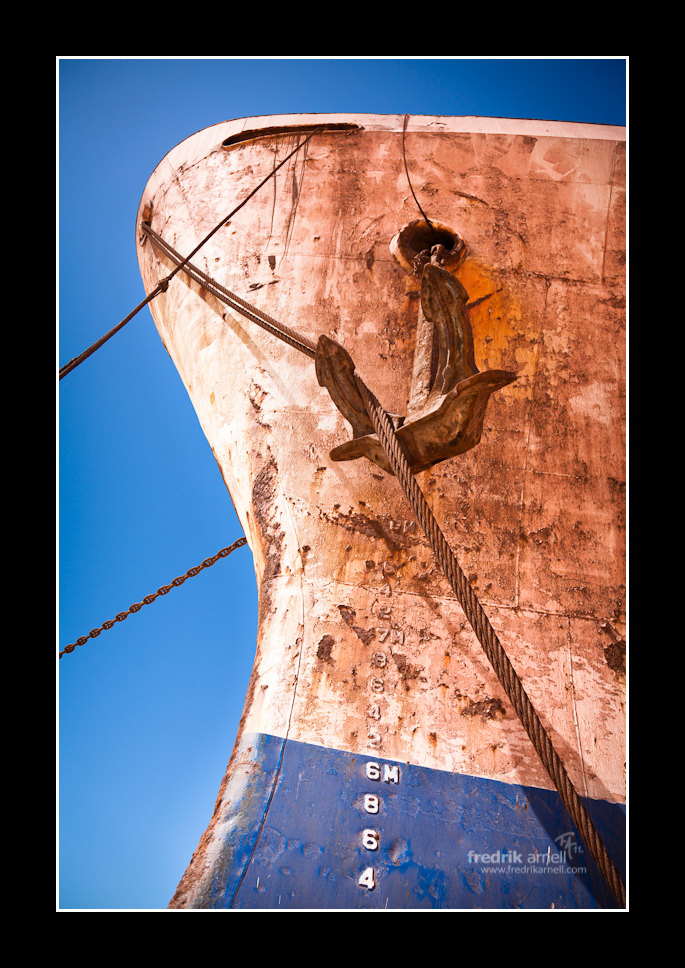|
Sometimes you come across stories that really grip you and that continue to grow as you explore it. This was the case for me with the wreck United Malika.
Time passed and I did not think more of the wreck until an opportunity to go to Mauritania presented itself, and with this there was the possibility to visit the site of the wreck. Starting in Morocco we drove a Land Rover Defender south going through the Moroccan-occupied territory of Western Sahara (a former Spanish colony abandoned in 1975). This is a dangerous place, dotted with land mines off the main road along the Atlantic Ocean. Heading further south we passed through the infamous Western Sahara-Mauritania border, the crossing where no roads exists between the countries for several kilometers in a no-man's land of sand and burnt car wrecks. A few tens of kilometers south-west of the border lies the second largest city of Mauritania, Nouâdhibou, sitting on the bayside of the Cap Blanc Peninsula. The city in itself is not much different from other mid-sized African cities: hustle and bustle, markets, Mercedes, loads of Mercedes, and a melting pot of Northern African Arabs and Black Sub-Saharan Africans, the former often ruling the latter, both in business and in society. What does set this place aside is the fact that it is home to one of the world's largest ship graveyards, where obsolete ships are dumped for a fraction of what it costs to have it dismantled in a place like Gujarat in India; just bribe the officials and you can dump your headache here. It has been estimated there are some 300 ship wrecks afloat in the bay, I guess no-one dares to count how many are lying below the water line. I cannot confirm the number, but I can say that the bay houses an out-of-this-world amount of rusting ships of varying sizes, states and shapes. However, my business here was not the 300-some ship wrecks afloat in the bay, but one particular wreck, the one of the United Malika, and that one is not to be found floating in the bay, but rather perched on land on the sandy very southern tip of the peninsula. Passing through the city of Nouâdhibou and the terminus for the only train in Mauritania, the mining train from the inland iron ore mines of Zouérat and F'dérik, we ended up at the ore processing plant with a guard asserting that this was the end of the road. Not believing him, we searched for an alternative route, but after having made a U-turn at a military camp it was clear that this really was the end of the road. Not the least deterred, we took the situation in our own hands and forged our own way through the sand, following the perimeter fence of the plant southwards, all with a backdrop of ore dust rising to the skies and a pungent stench coming from the ore processing. We passed the full length of the plant and after nearly flipping the trailer in the rough stony parts, we left it behind and advanced in low gear and headed up the hills to get a better view of where we should be heading to reach the wreck. After a few ups and downs on the stony hills I finally laid my eyes on the vessel I had been so fascinated about. It sat perfectly straight in the sand, with the anchor still stretched as to secure it from tipping over! An immense piece of rusty metal that looked to be in extremely good shape, apart from the chipping paint.
First of all, it surely is not the most accessible wreck, sitting on the sandy tip of the Cap Blanc Peninsula in remote Nouâdhibou in northern Mauritania in Western Africa. Adding to the remoteness is the fact that no roads lead to the tip, so just getting there is an off-road adventure in itself. The geographical location of the wreck is 20°46'15.83" N, 17°02'42.56" W. An interesting thing about this wreck is that it is visible from Google Maps.
Some complementary photos:
|
|
All stories and photographs © Fredrik Arnell |
